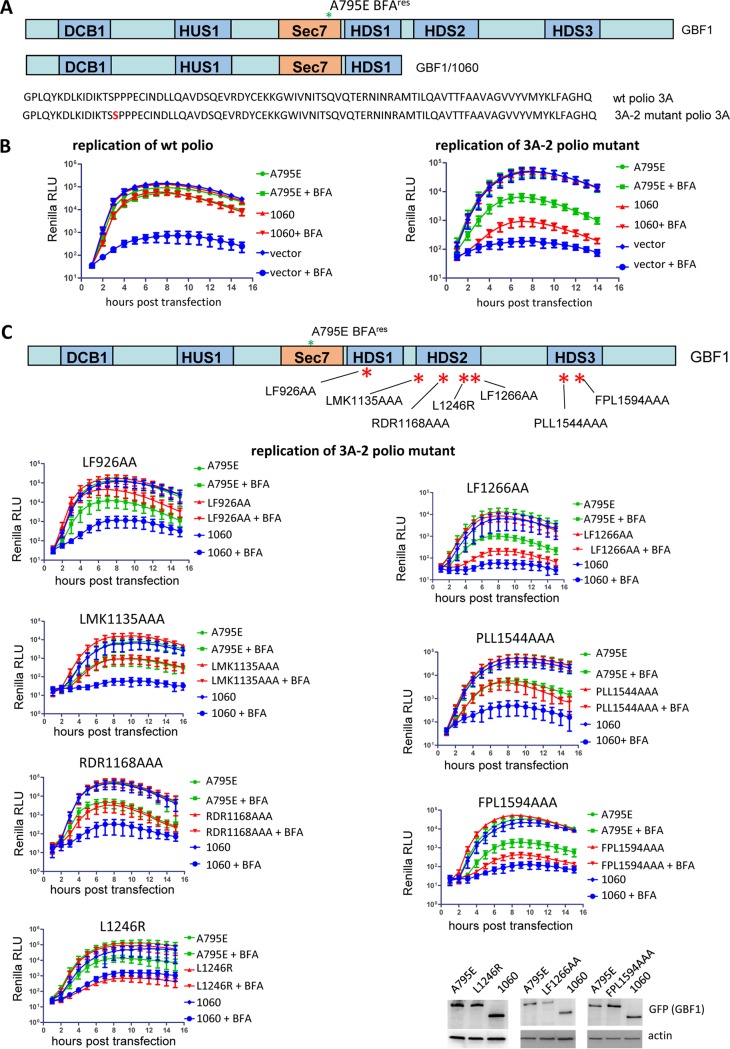FIG 7.
C-terminal GBF1 mutants show differential capacity to support replication of a wild-type versus the 3A-2 mutant replicon. (A) Top, scheme of the full-length and 1060 truncated GBF1 constructs; bottom, amino acid sequence of 3As from the wt poliovirus and 3A-2 mutant. All GBF1 expression constructs are GFP tagged and contain the A795E BFA resistance mutation in the Sec7 domain. (B) Performance of the full-length and 1060 truncated GBF1 constructs in a replication assay with a wt replicon and a replicon bearing the 3A-2 mutation, severely inhibiting 3A-GBF1 interaction. Cells were transfected with the plasmids expressing a full-length GBF1 A795E, a 1060 GBF1 A795E truncated construct, or an empty vector (negative control). The next day, the cells were transfected with a wt or 3A-2 poliovirus replicon RNAs expressing Renilla luciferase and incubated in the presence or absence of 1 μg/ml BFA. (C) Performance of the GBF1 mutants in the HDS1, HDS2, and HDS3 domains in a replication assay with a replicon containing 3A-2 mutation. Scheme of the mutation positions in the GBF1 domains is shown. All GBF1 expression constructs are GFP tagged and contain the A795E BFA resistance mutation in the Sec7 domain. Cells transfected with the full-length GBF1 A795E serve as a positive control, and those transfected with the 1060 truncated GBF1 A795 serve as a negative control. Expression of constructs L1246R, LF1266AA, and FPL1594AAA, severely impaired in rescuing the replication of the 3A-2 poliovirus replicon, is additionally verified by Western blotting in the samples from the corresponding experiments.

